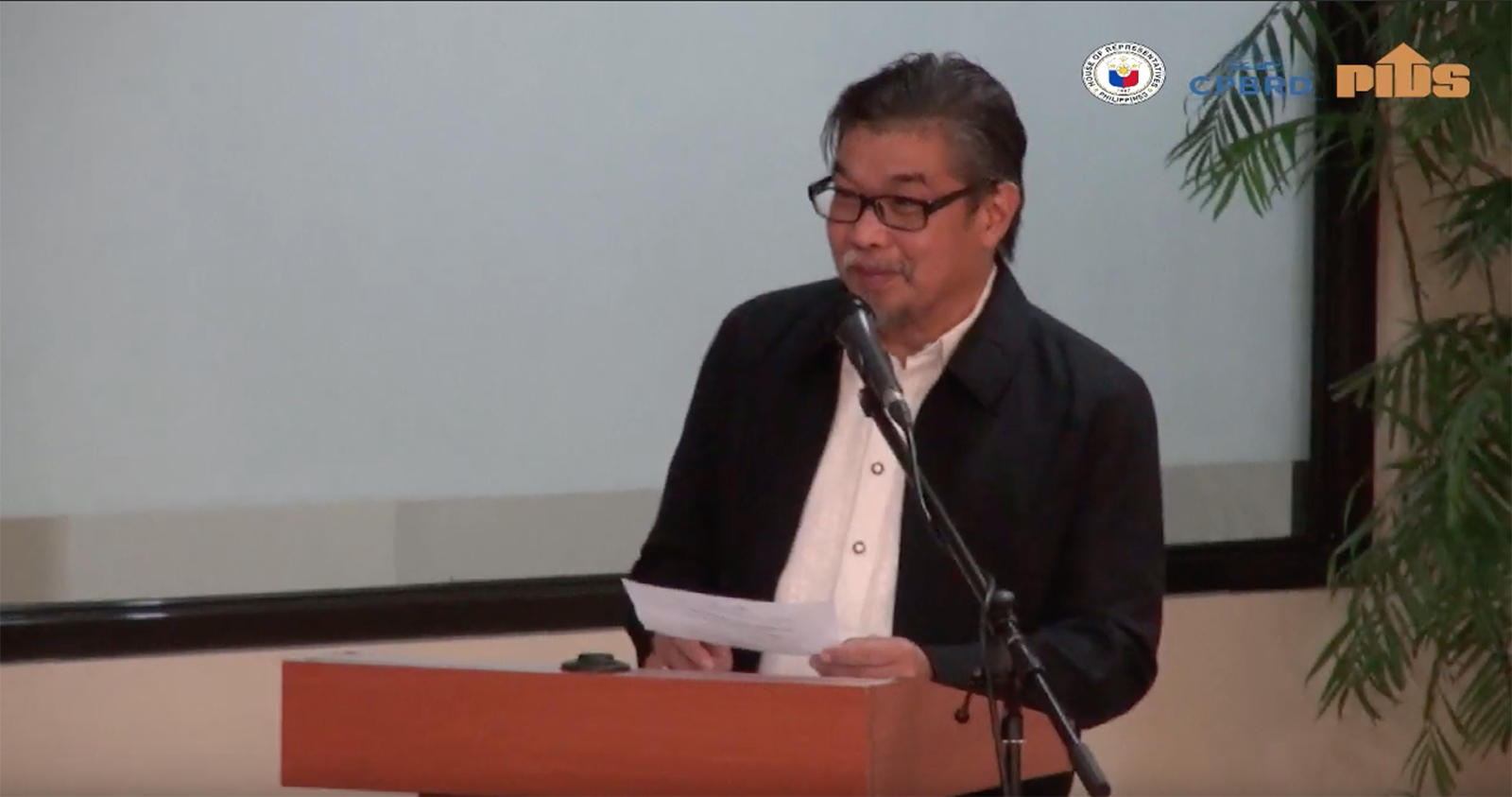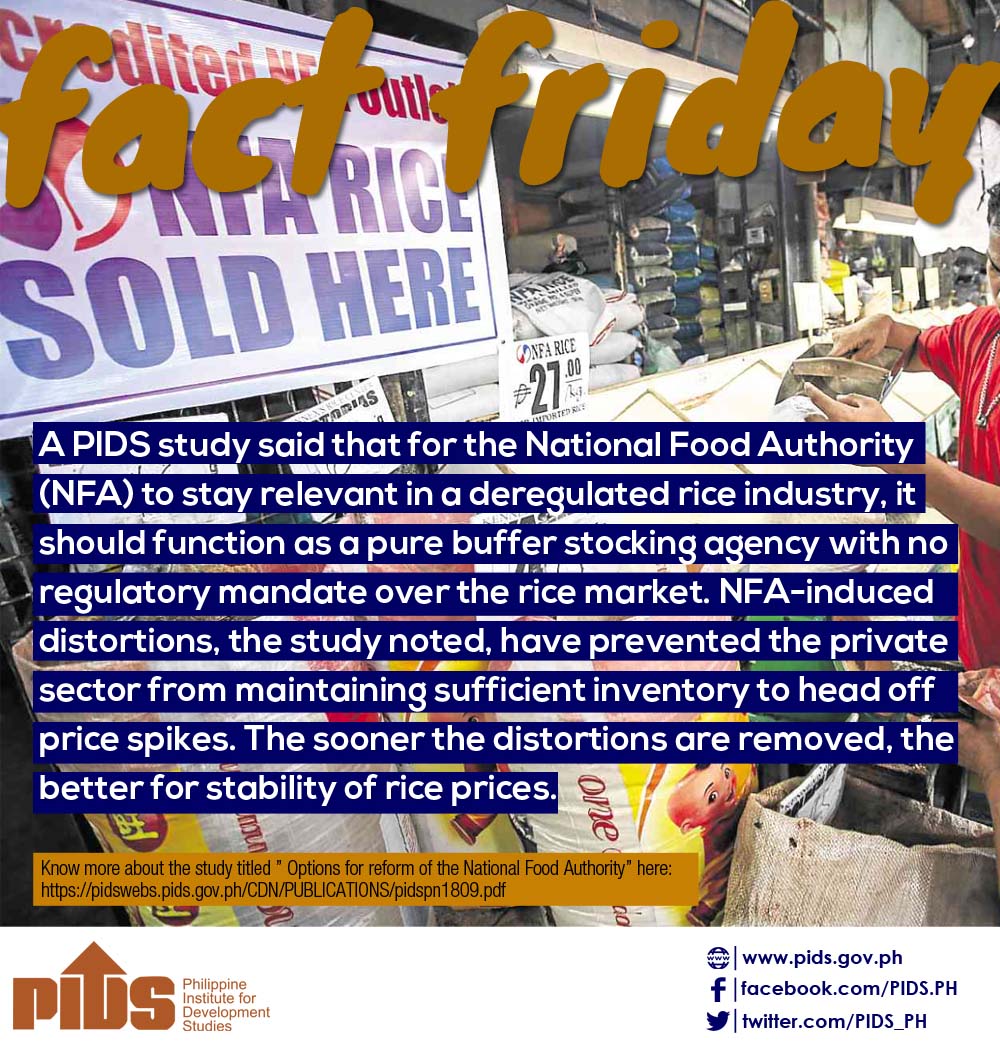In the Philippines, every president has promised to achieve rice self-sufficiency within his or her term. Sadly, this promise has been repeatedly broken and unmet. The current administration, however, hopes to break the trend of broken vows and guarantees 100-percent rice self-sufficiency or zero imports starting 2013 through the Food Staples Sufficiency Program (FSSP). Is this feasible?
Findings from a recent study conducted by the Philippine Institute for Development Studies (PIDS) Senior Research Fellow Roehlano Briones show that the answer to this question is negative. According to Briones, the rice self-sufficiency target is unlikely to be achieved, whether in 2013 or even through the course of the decade to 2020.
At the start of President Benigno Aquino III`s term in 2010, the Department of Agriculture (DA) crafted the FSSP, a coherent plan toward achieving rice self-sufficiency or zero importation starting 2013. To achieve this goal, the budget allocation for the DA has been increased to 55 billion pesos for 2013, a sharp increase compared to its 2010 budget of 33 billion. Much of this budget increase is intended to fund various strategies identified in the FSSP such as improving irrigation, sustaining research and development for new crop varieties, promoting mechanized on-farm and postharvest strategies, and harnessing the potential of high-elevation and upland rice ecosystems.
In spite of these efforts, however, rice self-sufficiency is still untenable, argues Briones. He explains that the FSSP targets are based on highly ambitious and unrealistic projections palay yield , from 3.78 t/ha to 4.53 t/ha, and production from 17.0 to 22.7 million t, over the period 2011 to 2016, corresponding to annual growth rates of 3.8 and 6.3 percent, respectively. These growth projections are clearly unattainable considering that historically, yield and production grew by a meager 1.5 and 3.2 percent, respectively, from 1994 to 2010.
A closer look at the underlying economic forces and economic behaviors of producers, consumers, and markets further reveals that increasing rice production alone would not eliminate importation. The study reveals that the only way to achieve rice self-sufficiency is to increase import barriers. However, Briones explains that protectionist policies would also make rice in the local market substantially more expensive and therefore will jeopardize the country`s pursuit for food security.
He notes that the goal of self-sufficiency should not be equated to zero imports. Rather, the goal should be based on a broader set of criteria such as nutritional norms for rice consumption and rice affordability, among others. He urged the government to rethink its policy.
For more information on this study, you may download the full text of the study from http://serp-p.pids.gov.ph/serp-p/download.php?d=5100. For queries on this topic, you may contact the Institute`s Public Affairs office at 892-4059 (c/o Gift Baroy or Gizelle Manuel) or email inquiries@pids.gov.ph.
Findings from a recent study conducted by the Philippine Institute for Development Studies (PIDS) Senior Research Fellow Roehlano Briones show that the answer to this question is negative. According to Briones, the rice self-sufficiency target is unlikely to be achieved, whether in 2013 or even through the course of the decade to 2020.
At the start of President Benigno Aquino III`s term in 2010, the Department of Agriculture (DA) crafted the FSSP, a coherent plan toward achieving rice self-sufficiency or zero importation starting 2013. To achieve this goal, the budget allocation for the DA has been increased to 55 billion pesos for 2013, a sharp increase compared to its 2010 budget of 33 billion. Much of this budget increase is intended to fund various strategies identified in the FSSP such as improving irrigation, sustaining research and development for new crop varieties, promoting mechanized on-farm and postharvest strategies, and harnessing the potential of high-elevation and upland rice ecosystems.
In spite of these efforts, however, rice self-sufficiency is still untenable, argues Briones. He explains that the FSSP targets are based on highly ambitious and unrealistic projections palay yield , from 3.78 t/ha to 4.53 t/ha, and production from 17.0 to 22.7 million t, over the period 2011 to 2016, corresponding to annual growth rates of 3.8 and 6.3 percent, respectively. These growth projections are clearly unattainable considering that historically, yield and production grew by a meager 1.5 and 3.2 percent, respectively, from 1994 to 2010.
A closer look at the underlying economic forces and economic behaviors of producers, consumers, and markets further reveals that increasing rice production alone would not eliminate importation. The study reveals that the only way to achieve rice self-sufficiency is to increase import barriers. However, Briones explains that protectionist policies would also make rice in the local market substantially more expensive and therefore will jeopardize the country`s pursuit for food security.
He notes that the goal of self-sufficiency should not be equated to zero imports. Rather, the goal should be based on a broader set of criteria such as nutritional norms for rice consumption and rice affordability, among others. He urged the government to rethink its policy.
For more information on this study, you may download the full text of the study from http://serp-p.pids.gov.ph/serp-p/download.php?d=5100. For queries on this topic, you may contact the Institute`s Public Affairs office at 892-4059 (c/o Gift Baroy or Gizelle Manuel) or email inquiries@pids.gov.ph.









